Report warns ‘significant risk’ of billions of pounds in development value being missed
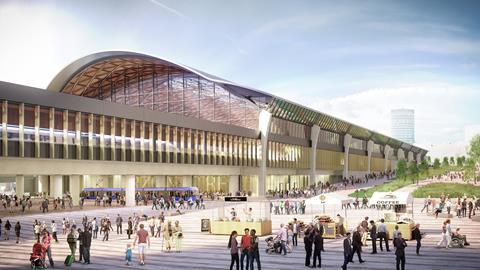
The Oakervee Review into HS2 has hinted that the design of most of the line’s stations will need to be rethought.
The government-owned company tasked with delivering High Speed 2 does not have the capacity to maximise the development value of the rail network’s stations and new public-private approaches should be considered, the long-awaited report concluded.
Prime minister Boris Johnson announced yesterday that the government will push ahead with delivering HS2, with his decision largely informed by the review, which reported in secret in December.
But the 130-page report put together by Douglas Oakervee’s panel made a number of recommendations for improving the delivery of the project, which it costed at £106bn in 2015 prices – £14bn more than a figure given by the National Audit Office last month.
In particular it said that responsibility for delivering HS2’s stations should be taken away from the Department for Transport’s wholly owned delivery company HS2 Ltd, to ensure that the potential for maximising the value of each scheme was realised.
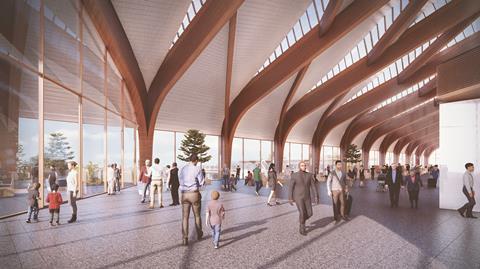
Grimshaw Architects, WSP and Arup Associates have already worked up designs for HS2’s Birmingham Interchange and Birmingham Curzon Street stations in the West Midlands. Grimshaw and Arup have also been appointed to design the new HS2 station at Euston, while Wilkinson Eyre and WSP are designing the Old Oak Common interchange in west London.
The Oakervee Review did not refer to the work of any of the practices by name, however it noted that all of the HS2 phase 1 designs were at “a different level of maturity” and “working toward RIBA 3 and schedule 17 submission”.
It said that while “delivering economic and social value” had been at the centre of the designs for the new HS2 station at Euston, “further opportunities need to be explored for commercial and residential development at the other stations along the route”.
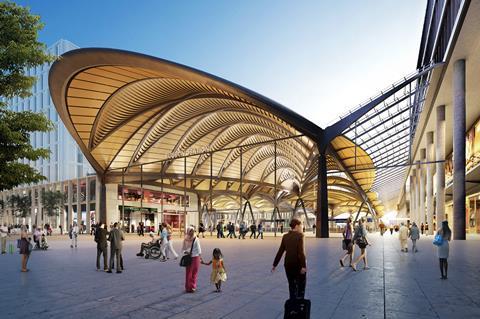
Euston was not immune from criticism, however. The review said the existing design for the HS2 station was “not satisfactory” and should be reviewed by the Department for Transport and all aspects of the station’s redevelopment should be overseen by a single organisation. It said that organisation “should not be HS2 Ltd” because of the complexity of the project.
The report said the assumption that HS2 Ltd should build all of HS2’s stations at public expense “should be challenged” because the company was “not properly incentivised to maximise over station development at HS2 stations”.
It added: “Further, given the complexity and scale of the HS2 project, HS2 Ltd may not have the capacity to properly focus on over station development. If the current arrangements for station development are left in place, there is a significant risk that economic value from HS2 station developments will not be maximised, and that there will be cost and schedule overruns.”
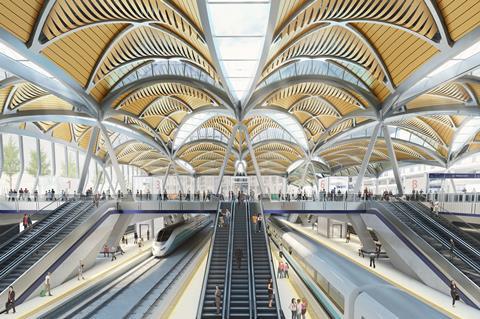
The report called for more exploration of the potential for local authorities or combined authorities to work with the private sector to take on HS2 Ltd’s role in funding and developing stations.
It added that there could also be potential for private sector funding to be used to pay for railway works into and at stations.
“It is estimated that, if all stations for phase 1 were delivered in this manner (ie funded and developed by the private sector in association with local government), this would lead to capital cost savings amounting to potentially several billions of pounds,” the report said.
The report recognised that a “bespoke, specific commercial model” may need to be developed, it could build on the experience of London and Continental Railways on major development projects.

“There could also be opportunities to capture value created in land close to HS2 stations especially at Euston and Birmingham Curzon Street,” the report said.
“This value would normally accrue to freeholders but, if captured, could defray some of the cost of developing the HS2 stations.”
In announcing his decision to proceed with the construction of HS2, the prime minister accepted that the project’s costs had “exploded”, but said that “poor management to date” had not taken away form the fundamental value of the project.
“We will, in line with Oakervee’s recommendations, be interrogating the current costs to identify where savings can be made in phase one without the costs and delays that would be associated with a detailed redesign,” he said.
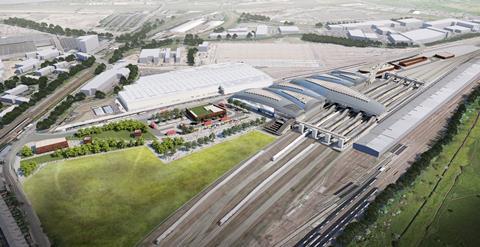
“And, so that the company can focus solely on getting phases 1 and 2A built on something approaching on time and on budget, I will be creating new delivery arrangements for both the grossly behind-schedule Euston terminus, and phase 2B of the wider project.”
Johnson predicted that services between London and Birmingham could commence by the end of the decade.
Last month’s NAO report suggested that only a “truncated” service between Birmingham and Old Oak Common would be possible by 2029.
Among its many tasks, the Oakervee Review was asked to look at whether stopping HS2 services at Old Oak Common – where there will be an interchange with Crossrail and the Great Western Mainline – was an appropriate move to save money.
The review recommended continuing HS2 to Euston, but said that Old Oak Common should be used as a “temporary base” while the final connection to Euston was “got right”.
















3 Readers' comments